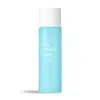What's inside
What's inside
 Key Ingredients
Key Ingredients

 Benefits
Benefits

 Concerns
Concerns

 Ingredients Side-by-side
Ingredients Side-by-side

Water
Skin ConditioningDipropylene Glycol
HumectantNiacinamide
SmoothingPEG-32
HumectantHydroxyethylcellulose
Emulsion StabilisingDisodium EDTA
PEG/PPG-17/6 Copolymer
SolventAllantoin
Skin ConditioningPanthenol
Skin ConditioningAlcohol
AntimicrobialButylene Glycol
HumectantSodium Hyaluronate
HumectantCitrus Limon Fruit Extract
MaskingCaprylyl Glycol
EmollientPentylene Glycol
Skin ConditioningBambusa Vulgaris Extract
Skin ConditioningMadecassoside
Antioxidant1,2-Hexanediol
Skin ConditioningPhenoxyethanol
PreservativeChlorphenesin
AntimicrobialWater, Dipropylene Glycol, Niacinamide, PEG-32, Hydroxyethylcellulose, Disodium EDTA, PEG/PPG-17/6 Copolymer, Allantoin, Panthenol, Alcohol, Butylene Glycol, Sodium Hyaluronate, Citrus Limon Fruit Extract, Caprylyl Glycol, Pentylene Glycol, Bambusa Vulgaris Extract, Madecassoside, 1,2-Hexanediol, Phenoxyethanol, Chlorphenesin
Anastatica Hierochuntica Extract
AstringentWater
Skin ConditioningDipropylene Glycol
HumectantMethylpropanediol
SolventGlycerin
HumectantButylene Glycol
HumectantCarbomer
Emulsion StabilisingArginine
MaskingButyrospermum Parkii Butter
Skin ConditioningCaprylic/Capric Triglyceride
MaskingOlea Europaea Fruit Oil
MaskingHydrogenated Lecithin
EmulsifyingSqualane
EmollientDisodium EDTA
Xanthan Gum
EmulsifyingDipotassium Glycyrrhizate
HumectantSodium Hyaluronate
HumectantMelia Azadirachta Leaf Extract
Skin ConditioningMelia Azadirachta Flower Extract
Skin ConditioningCoccinia Indica Fruit Extract
Skin ConditioningSalix Alba Bark Extract
AstringentBambusa Vulgaris Water
Skin ConditioningAloe Barbadensis Flower Extract
EmollientCeramide NP
Skin ConditioningCholesterol
EmollientHydrolyzed Hyaluronic Acid
HumectantSolanum Melongena Fruit Extract
Skin ConditioningPhytosphingosine
Skin ConditioningOcimum Sanctum Leaf Extract
Skin ConditioningCurcuma Longa Root Extract
MaskingCorallina Officinalis Extract
Skin ConditioningSodium Acetylated Hyaluronate
HumectantAnastatica Hierochuntica Extract, Water, Dipropylene Glycol, Methylpropanediol, Glycerin, Butylene Glycol, Carbomer, Arginine, Butyrospermum Parkii Butter, Caprylic/Capric Triglyceride, Olea Europaea Fruit Oil, Hydrogenated Lecithin, Squalane, Disodium EDTA, Xanthan Gum, Dipotassium Glycyrrhizate, Sodium Hyaluronate, Melia Azadirachta Leaf Extract, Melia Azadirachta Flower Extract, Coccinia Indica Fruit Extract, Salix Alba Bark Extract, Bambusa Vulgaris Water, Aloe Barbadensis Flower Extract, Ceramide NP, Cholesterol, Hydrolyzed Hyaluronic Acid, Solanum Melongena Fruit Extract, Phytosphingosine, Ocimum Sanctum Leaf Extract, Curcuma Longa Root Extract, Corallina Officinalis Extract, Sodium Acetylated Hyaluronate
Ingredients Explained
These ingredients are found in both products.
Ingredients higher up in an ingredient list are typically present in a larger amount.
Butylene Glycol (or BG) is used within cosmetic products for a few different reasons:
Overall, Butylene Glycol is a safe and well-rounded ingredient that works well with other ingredients.
Though this ingredient works well with most skin types, some people with sensitive skin may experience a reaction such as allergic rashes, closed comedones, or itchiness.
Learn more about Butylene GlycolDipropylene Glycol is a synthetically created humectant, stabilizer, and solvent.
This ingredient helps:
Dipropylene glycol is technically an alcohol, but it belongs to the glycol family (often considered part of the ‘good’ alcohols). This means it is hydrating and gentle on skin unlike drying solvent alcohols like denatured alcohol.
As a masking agent, Dipropylene Glycol can be used to cover the smell of other ingredients. However, it does not have a scent.
Studies show Dipropylene Glycol is considered safe to use in skincare.
Learn more about Dipropylene GlycolDisodium EDTA plays a role in making products more stable by aiding other preservatives.
It is a chelating agent, meaning it neutralizes metal ions that may be found in a product.
Disodium EDTA is a salt of edetic acid and is found to be safe in cosmetic ingredients.
Learn more about Disodium EDTASodium Hyaluronate is hyaluronic acid's salt form. It is commonly derived from the sodium salt of hyaluronic acid.
Like hyaluronic acid, it is great at holding water and acts as a humectant. This makes it a great skin hydrating ingredient.
Sodium Hyaluronate is naturally occurring in our bodies and is mostly found in eye fluid and joints.
These are some other common types of Hyaluronic Acid:
Learn more about Sodium HyaluronateWater. It's the most common cosmetic ingredient of all. You'll usually see it at the top of ingredient lists, meaning that it makes up the largest part of the product.
So why is it so popular? Water most often acts as a solvent - this means that it helps dissolve other ingredients into the formulation.
You'll also recognize water as that liquid we all need to stay alive. If you see this, drink a glass of water. Stay hydrated!
Learn more about Water